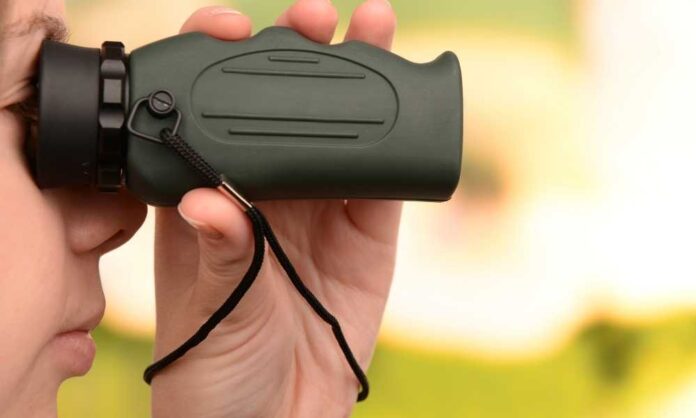Although monoculars seem like antediluvian gadgets more typical of spy movies or the Iron Curtain days, they are still current. If you are used to going hunting or getting into nature, they can be instrumental because there are times when the environment is deceiving. You need an object that allows you a better visualization.
Also, current models allow use with mobile devices. Thanks to this, you can take better snapshots of natural landscapes. However, choosing the best monocular on the market is not easy.
We always urge our readers to invest based on purchasing criteria. When we talk about monoculars, these are:
- Kind
- Scope and zoom
- Size
- Prism
- Materials
- Lens treatment
Types of Monocular
Although apparently, the monocular is a simple object, it presents some complexity. Due to this, we can find several types of monoculars. Although depending on its extra characteristics, we could make a much broader list, we have preferred to narrow the list to three large families. We present them below along with a brief description:
Monocular with night vision: Focused on night use. Some models also work well in low-light environments. Thanks to them, you can thoroughly scrutinize hostile or unknown places.
Daytime monocular: The classic, the one of all the life. This type of monoculars is the most common. They are focused on magnifying the image. They are great for outdoor activities. One of the best daytime monoculars is Zoomshot Pro. To know more about this incredible monocular, read our in-depth Zoomshot Pro monocular review.
Monocular with thermal visor: They are monoculars focused on particular activities, such as hunting. They make it possible to detect objects thanks to the thermal radiation they give off.
Scope and zoom
Like good binoculars, the best monoculars on the market have different scopes and zooms. If the activity for which you need the monocular is not very demanding, a 10x or less will suffice. However, most tend to offer that or more, and it is not reflected too much in the price. Assess how much increase you need for your adventures.
Size
Size is not just a question of ergonomics. This influences the previous factor. Unless it is a technologically very sophisticated product, the bigger it is, the more it reaches. Everything will depend on the activity you do. If you go on an adventure, you will need something compact. In case you want to photograph, you may not care so much about a larger size.
Prism
To a large extent, the prism you decide will have a close relationship with the budget you have. Those of the BK7 type comply in terms of sharpness, but their poor contrast can play a trick on you. On the contrary, we have already pointed out that the image quality of the BK4s is much higher, although they are more expensive. It will also depend on the type of activity.
Materials
If you’re going to venture into weeds and rough nooks, you’ll need a sturdy monocular. To do this, bet on quality finishes. On the other hand, if you explore areas where a downpour may surprise you, it is worth opting for a monocular resistance to this inclement. Always bet on durability even if it requires a higher first investment.
What treatments do monocular lenses receive?
The lens is essential for observation through a monocular. However, not all are treated in the same way. With the advancement of technology, there are more and more finishes. Thanks to them, the optics, the monocular performance, or even the level of security vary. Although there are a large number of them, we have listed the most common below:
Photochromic: Photochromic lenses are beneficial for outdoor activities, especially if they involve water areas, such as coastlines or lakes. They have a genuine ability to darken, which allows you to offer greater comfort to your eyes in moments of harsh sunlight. Also, the treatment blocks UV rays.
UV Protection: Similar to photochromic lenses, but more focused on blocking UV rays. Probably, the monocular you buy has a lens with this treatment regardless of whether it incorporates others or not. Thanks to this, the eyes are fully protected against harmful UV rays.
Polarized: The polarized treatment is common in most lenses of the best current monoculars. It incorporates technology that allows the lenses to block, like the rest of the treatments, UV rays. Additionally, they are treatments that eliminate glare. Thus, lenses treated in this way are great to use in very open spaces.
Anti-reflective: Reflections are the worst ally when using a lens or taking a photograph. It doesn’t matter if you go hunting, snapshot “fishing,” or just spotting animals: the reflection is hideous. Therefore, with this treatment, this problem is corrected. Generally, most modern lenses incorporate it.
Conclusion
Monoculars can be a great travel companion. Thanks to new technologies, they can be embedded in mobile phones to help you take great snapshots. On the other hand, they are ideal for enjoying the scenery or engaging in bird watching or hunting activities.

